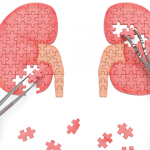 ORLANDO—Rheumatic disease diagnoses are clinical, but, often, “tissue is the issue.” In a patient with climbing creatinine or abnormal urine studies, kidney biopsies may provide invaluable information that clarifies the clinical picture and informs therapeutic management. But to best use that information, we need to understand a bit about renal pathology.
ORLANDO—Rheumatic disease diagnoses are clinical, but, often, “tissue is the issue.” In a patient with climbing creatinine or abnormal urine studies, kidney biopsies may provide invaluable information that clarifies the clinical picture and informs therapeutic management. But to best use that information, we need to understand a bit about renal pathology.
At the 2022 ACR Education Exchange, April 28–May 1, Agnes B. Fogo, MD, professor of pathology, microbiology and immunology, John L. Shapiro Chair of Pathology, Vanderbilt University Medical Center, Nashville, shared her expertise.
Lupus Nephritis
Glomerular lesions in systemic lupus erythematosus (SLE) are diverse. Some lesions require aggressive immunosuppression, whereas others don’t. Some can result in kidney failure, and others never progress. Given the wide spectrum of lesions and treatment implications, proper pathologic classification of lupus nephritis is imperative. Dr. Fogo kicked off her talk with a simplified approach to understanding the International Society of Nephrology/Renal Pathology Society Classification of Lupus Nephritis, last revised in 2018.1
Pathology in lupus nephritis is all about injury caused by immune-complex deposits, which are detected by immunofluorescence and electron microscopy.
Dr. Fogo said, “Immunofluorescence is green. So we look at the tissue and ask ourselves, ‘Is it green? Where is it green? The mesangium, capillaries or capillary walls?’”
Put simply, we can describe lupus nephritis with three injury patterns:
- Mesangial: Deposits in the mesangium (i.e., the structural support cells that hold the glomeruli together)—minimal mesangial lupus nephritis (class I) and mesangial proliferative lupus nephritis (class II);
- Capillary (endothelial cell): Deposits in the capillary loops themselves—focal lupus nephritis (class III) and diffuse lupus nephritis (class IV); and
- Capillary wall (epithelial cell): Deposits in the capillary walls that just bother the podocytes—membranous lupus nephritis (class V).
Additional descriptors include the extent of glomerular involvement (i.e., ≤ or ≥50% of glomeruli), the pattern of glomerular involvement (i.e., segmental or global) and the chronicity of disease (i.e., active or chronic).
When it comes to lupus nephritis classes, Dr. Fogo said, “Lupus nephritis class numbers aren’t sequential. Patients can start at any one number and, spontaneously or in response to an intervention, change to another—for better or for worse. [Patients with] lupus nephritis can also relapse [to] any form.”
But which findings are the worst? Dr. Fogo encouraged audience participation to drive home a point: “Say it with me: ‘Subendothelial deposits are bad.’
“They cause the endocapillary injury we see in lupus nephritis class III and IV,” she continued. “They annoy the capillary endothelial cells and activate complement, eliciting a hypercellular response that fills the capillary lumen so the kidney can’t filter properly.”



